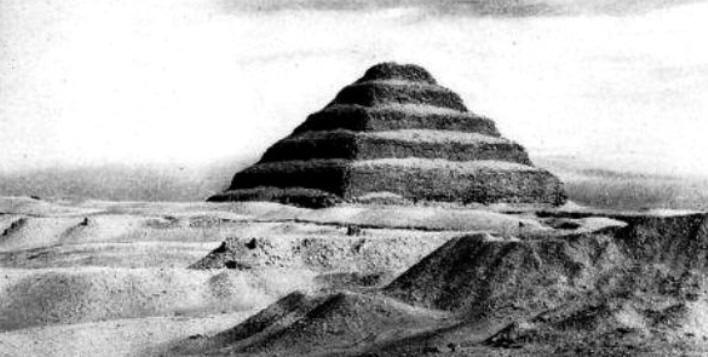Behold: the Humble Megaproject – a contradiction in terms if ever there was one.
The historical contexts of the earliet megaproject began with the Ancient Egyptians, whose Old Kingdom (3rd Dynasty) megaprojects would have included mostly the last extant above-ground funerary compounds, mastabas, and temples, but more importantly, the damming and management of the Nile, with which they learned to control and use annual inundations to their advantage for trade, agriculture, fortification, and to move building materials inland from a quarry. The evident expedience and ingenuity with which the Egyptians built was millennia ahead of its time, and never to be equaled. I daresay the trend of modern day megaproject is antithetical to all but the most poorly executed works in Ancient Egypt.

According to a Ptolemaic Era stela, a legend of that day credited Djoser with ending a seven-year famine, for which he was doubtlessly revered. Djoser’s military campaigns in the Sinai Peninsula were critical to Egypt’s development at the time. Thus, did his Step Pyramid , at Saqqara, pay homage to his legacy as one of the founding rulers of the (Great) OK.

Subsequently, in the 4th Dynasty, King Sneferu needed three attempts to perfect the sides of his step pyramid into smooth surfaces. His first attempts at Meidum, led to implosion. His next,the infamous Bent Pyramid, and finally, his successful Red Pyramid, at Dashur.
However; he was an avid engineer. He first walled the capitol city of Memphis – protecting it from the Nile’s annual inundation, and from attack, as recalled by Herodotus:
Of Min (Sneferu), who first became king of Egypt, the priests said that on the one hand he banked off the site of Memphis from the river: for the whole stream of the river used to flow along by the sandy mountain- range on the side of Libya, but Min formed by embankments that bend of the river which lies to the South about a hundred furlongs above Memphis, and thus he dried up the old stream and conducted the river so that it flowed in the middle between the mountain … and outside the city he dug round it on the North and West a lake communicating with the river, for the side towards the East is barred by the Nile itself (Herodotus, 2006)
As Herodotus recounts, Sneferu presided over the massive and unprecedented civil megaproject diversion of the Nile, and implemented a vast network of canals and dams that would harness the Nile’s inundations: creating more stable areas to settle, as well as controlling the arable land along the Nile’s banks. This massive undertaking must be considered among the world’s first infrastructural megaproject.
Conducting 20,000# limestone blocks on sledges across the Egyptian Sahara was only made possible by pouring water under the sledge, so to reduce friction. Lucky for early mason tenders, the limestone quarry was but a few hundred meters away from the site.[ii] There is lively debate as to how the blocks were raised to the upper courses. Specifically, rope-rolls[iii] and or ramps to facilitate loading the upper courses are thought to have been used. There is even lively debate as to the manpower required to build the structures. Herodotus wrote about 2000 years later:
“For this, they said, the ten years were spent, and for the underground chambers on the hill … for the making of the pyramid itself there passed a period of twenty years … they worked by a hundred thousand men at a time, for each three months continually.
Modern Egyptologists estimate a workforce of about 20’000 to 25’000 men[iv], but not everyone agrees. Illig and Löhner wonder if such legions of workers really necessary: they calculated that a total number of 6’700 workers, would have been necessary to build Khufu’s pyramid. Most of those were highly skilled craftsmen and artisans, not unskilled workers or even slaves (Löhner, 2006). It would be interesting to know how Illig and Löhner developed their calculations.
Petrie puts the number of workers needed to haul the stone, and erect Khufu’s pyramid even higher, at 100,000 (Petrie, 1883), but then he was relying on Herodotus. By comparison, the Freedom Tower required some 26,000 workers to complete.
Ahmose built his pyramid at Abydos – the last pyramid to be part of a mortuary complex – and broke ground on ambitious infrastructure projects – many to be finished posthumously by his son. His zeal for building was continued through the 18th Dynasty, when Egypt would enjoy almost five-hundred years of uninterrupted prosperity.
[i] Rising nobility class of the MK were among the first non-royal family tomb owners.
[ii] They traveled much further for other stone they quarried.
[iii]
[iv]
#megaproject #construction management #project management










